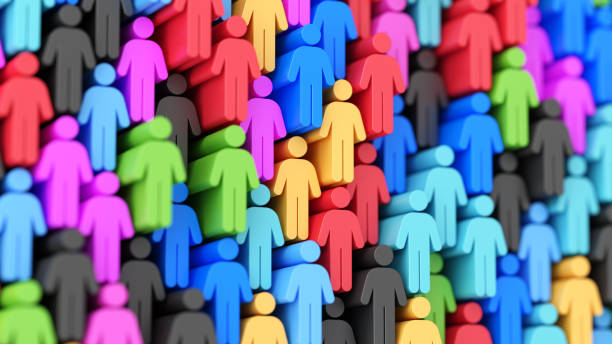
As society evolves, so do its norms, expectations, and definitions of what is “acceptable.” In any culture, certain behaviours, beliefs, and lifestyles are embraced, while others are marginalized or stigmatized. While mainstream, “acceptable” society tends to promote values that align with dominant ideologies, there is a growing phenomenon of “hidden” societies—groups or individuals who feel pushed to the fringes and choose to live in concealment to avoid judgment, exclusion, or backlash.
This growing divide raises important questions about tolerance, inclusivity, and the limitations of societal acceptance. In this blog post, we’ll explore the differences between “acceptable” society and the increasingly concealed “hidden” societies, and why this shift toward concealment is concerning for the future of social harmony.
1. Defining “Acceptable” Society
“Acceptable” society refers to the dominant social and cultural framework that shapes mainstream behaviours, values, and norms. These are the ideologies and practices that are widely recognized and encouraged by the majority, typically determined by political, economic, religious, and cultural power structures. The behaviours and beliefs embraced by acceptable society tend to align with prevailing ideals around morality, success, lifestyle, and identity.
In an acceptable society, individuals are generally expected to adhere to certain norms:
- Social norms: Expectations around behavior, dress, and interaction.
- Cultural norms: Traditions, customs, and values that reflect a society’s heritage or majority belief systems.
- Moral norms: Widely held beliefs about what is right or wrong, often influenced by religious or philosophical principles.
While these norms create order and cohesion, they can also be rigid and exclusive, making it difficult for those who don’t fit within the mainstream to feel fully accepted or valued.
2. The Rise of Hidden Societies
As society becomes more interconnected, there is increasing pressure to conform to the dominant norms of acceptable society. However, not everyone can or wants to fit into this mold. As a result, many individuals and communities find themselves driven to concealment, forming “hidden” societies that operate outside or parallel to the mainstream. These hidden societies often emerge as a way to protect oneself from the judgment, prejudice, or persecution that comes from not adhering to accepted norms.
Hidden societies can take many forms:
- Subcultures: Groups that reject mainstream values and create their own social, cultural, or artistic identity, such as underground music scenes, countercultural movements, or alternative lifestyles.
- Marginalized communities: Individuals who face social stigma or discrimination based on their race, gender identity, sexual orientation, or religion may withdraw into safer, hidden spaces to avoid being targeted.
- Secret practices or beliefs: Groups or individuals who hold unconventional spiritual beliefs or engage in alternative forms of living may choose to remain hidden to avoid public scrutiny or social rejection.
Let’s look at some examples of modern hidden societies:
3. Examples of Hidden Societies
1. The Drug Subculture
In many parts of the world, drug use and distribution operate as a hidden society. Although drug use is widespread in many places, it remains heavily stigmatized or criminalized, forcing users and dealers to operate in the shadows. The war on drugs and societal judgment often push these communities underground, where they must hide their activities to avoid legal consequences or social condemnation.
The drug subculture forms its own networks, language, and rules—often hidden from mainstream society. Users may conceal their addictions out of fear of losing their jobs, relationships, or reputations, leading to a secretive, sometimes dangerous existence. Instead of receiving help, they often face isolation, further driving them into the depths of concealment.
2. The Underground Sex Work Industry
Sex work is another example of a hidden society. In many places, sex work is criminalized or heavily stigmatized, forcing those who engage in it to operate underground. Despite its prevalence, sex workers often face harsh judgment from society, and many are pushed into the margins due to the taboo nature of their profession.
Because of societal disapproval, sex workers often hide their identities and activities to protect themselves from legal repercussions, discrimination, or personal harm. The stigma surrounding sex work also means they have limited access to legal protections, healthcare, and safe working conditions, making this hidden society a vulnerable one. Conversations around decriminalizing sex work and providing protections for those involved continue, but many remain forced to live in concealment.
3. The Fear of Speaking Freely
A growing hidden society exists around the fear of speaking freely, especially in today’s increasingly polarized world. People who hold opinions that differ from the dominant cultural or political narrative often feel the need to hide their views for fear of cancel culture, public shaming, or professional repercussions.
This is particularly true in workplaces or social circles where there is strong pressure to conform to specific beliefs or ideologies. Instead of engaging in open dialogue, individuals may choose to self-censor or only share their true thoughts in private spaces with like-minded individuals. This fear of speaking freely creates a hidden society of individuals who conceal their opinions to avoid being ostracized, thus limiting healthy debate and the exchange of ideas.
4. Why Are People Being Driven to Concealment?
Several factors contribute to the growing need for certain individuals and groups to hide aspects of their lives:
Social Judgment and Stigma
One of the primary reasons people retreat into hidden societies is to avoid judgment and social stigma. In an era of increasing polarization, it has become difficult for people with differing viewpoints or lifestyles to openly express themselves without fear of being attacked or ostracized. Whether it’s a religious belief, political view, or non-mainstream lifestyle choice, the pressure to conform often leads people to hide their true selves in order to avoid public scrutiny or backlash.
Cancel Culture and Fear of Consequences
The rise of cancel culture has amplified the fear of being publicly shamed or “canceled” for holding opinions or engaging in behaviors that don’t align with the dominant narrative. This can create a culture of silence, where people feel compelled to conceal their true beliefs or lifestyle choices to protect their reputations, careers, or relationships. Instead of fostering open dialogue, the fear of cancellation drives more people into hidden spaces where they can express themselves without fear of reprisal.
Moral and Cultural Policing
As society becomes more divided on issues such as race, gender, religion, and politics, there is an increasing tendency to police others’ behaviors and beliefs. This moral and cultural policing creates a rigid framework for what is considered “acceptable,” leaving little room for nuance, diversity, or nonconformity. People who feel that their identities or beliefs are not recognized or respected by acceptable society may feel forced to conceal their true selves to avoid confrontation or marginalization.
5. The Dangers of Creating Hidden Societies
While hidden societies can offer protection and a sense of belonging, they also present significant challenges for broader social cohesion and inclusivity:
Deepening Divides
When people feel they cannot fully express themselves within the framework of acceptable society, it reinforces the divide between mainstream and marginalized groups. Instead of fostering understanding and acceptance, it creates an us vs. them mentality, where hidden societies retreat further into secrecy, and mainstream society becomes more rigid in its norms. This division can lead to a fragmented society where different groups live in isolation from one another, rather than engaging in meaningful dialogue and cooperation.
Suppression of True Identity
Concealment often comes at a personal cost. Those who feel forced to hide aspects of their identity may experience feelings of shame, isolation, or disconnection from their authentic selves. This suppression of one’s true identity can lead to emotional distress, mental health struggles, and a sense of alienation from both the mainstream society and their hidden community. When people are unable to live authentically, it impacts their well-being and sense of belonging.
Stifling Open Dialogue
The rise of hidden societies stifles the very open dialogue needed for progress and mutual understanding. When people feel unable to express themselves openly, opportunities for education, empathy, and growth are lost. Hidden societies tend to thrive in secrecy, which limits the possibility of fostering broader societal change or addressing the systemic issues that drive people into concealment in the first place.
Conclusion: The Future of Social Inclusivity
The divide between acceptable society and hidden societies reveals important truths about how we define inclusion and acceptance. While acceptable society may offer structure and norms, it often fails to accommodate the full diversity of human experience. The rise of hidden societies shows that many people still feel the need to conceal their true selves in order to protect their well-being or avoid judgment.
To build a more inclusive and tolerant world, we must challenge rigid social norms, encourage open dialogue, and expand the definition of what is considered “acceptable.” Only then can we foster a society where everyone feels free to live authentically, without fear of rejection or concealment.




